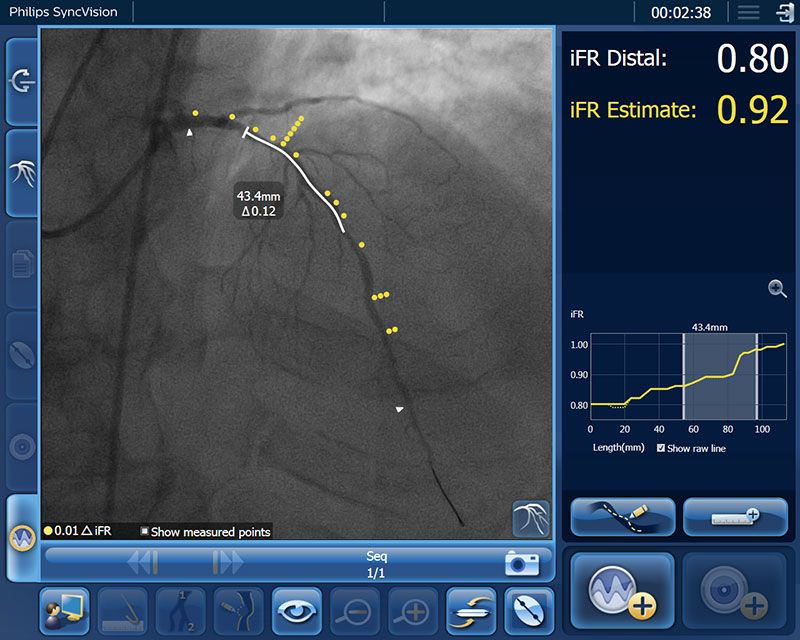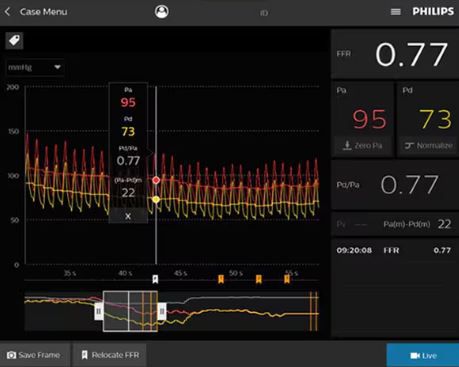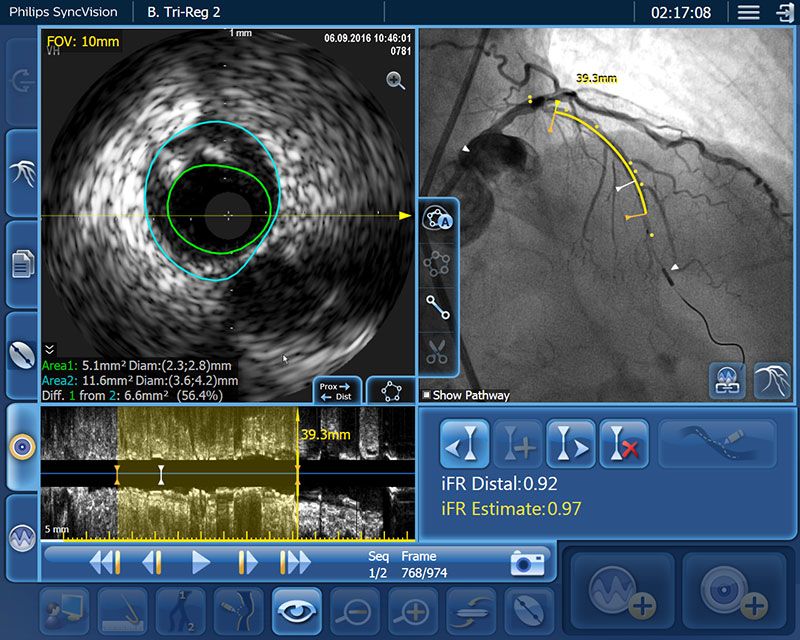
Image-guided therapy
iFR
Be confident in treatment and deferral decisions with Philips iFR
iFR is in a class of its own and is the leading hyperemia-free physiologic index for measuring pressure in diagnostic and interventional procedures. Only offered by Philips, iFR Co-registration maps the physiologic measurements directly onto the angiogram enabling more complete procedural guidance. No other resting index has an ESC and ACC/AHA/SCAI Class IA recommendation based on the high level of clinical evidence for its accuracy. Philips iFR is the Gold Standard [1,2].
Demonstrated results
Discover how ACT1 ACT2 guides clinical decisions
The ACT1 ACT2 workflow uses Philips iFR to elevate physiologic decision-making, allowing physicians to determine whether and where to treat and confirm treatment decisions. Learn more about how Philips iFR can help you leave no ischemia behind [3].

Only iFR has Co-registration for advanced physiologic guidance
Map iFR values directly onto the angiogram so you can see which parts of a vessel are causing ischemia. With iFR Co-registration there is no need for hyperemic drugs. You can automatically co-register values in seconds onto the angiogram.
- Better discern focal, serial or diffuse disease [6]
- Determine precise lesion severity and location [7,8]
- Make length measurements without a cumbersome pullback device [6]
- Estimate the physiologic impact of a virtual stent [6]
iFR Co-registration is available on the new Philips IntraSight interventional applications platform.
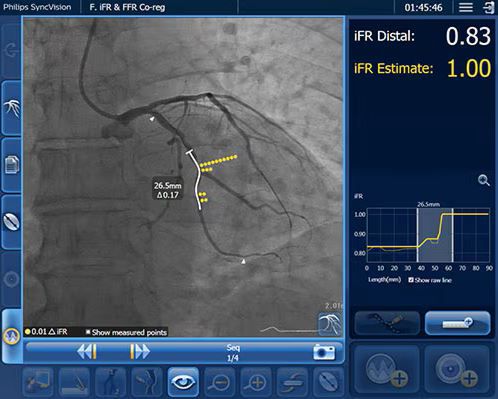
iFR Pullback technology [7]
iFR Pullback technology reveals the physiologic profile of the entire vessel, so when you encounter diffuse disease or serial lesions you can make informed treatment decisions.
Provides beat-by-beat iFR pressure measurements across the entire vessel, artery-by-artery
Establishes the physiological significance of each vessel and/or individual lesion (focal or diffuse)
Provides a clear view of the functional gain
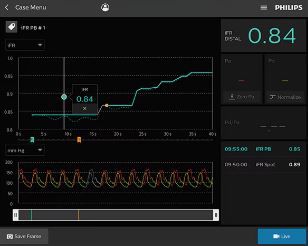
Image gallery
Footnotes
- Neumann, F-J et al. 2018 ESC/EACTS Guidelines on myocardial revascularization. European Heart Journal (2019) 40, 87–165.
- Lawton J. et al. 2021 ACC/AHA/SCAI Guideline for Coronary Artery Revascularization. JACC. 2022;79(2):e21-e129.
- Jeremias A et al. Blinded physiological assessment of residual ischemia after successful angiographic percutaneous coronary Intervention: The DEFINE PCI Study. JACC Cardiovasc Interv. 2019 Oct 28;12(20):1991-2001.
- Patel et al. 1-Year Outcomes of Blinded Physiological Assessment of Residual Ischemia After Successful PCI. J Am Coll Cardiol Intv 2022;15:52–6.
- Berntorp et al. Instantaneous wave-free ratio compared with fractional flow reserve in PCI: A cost-minimization analysis. Int J Cardiol 2021 1;344:54-59.
- Nijjer SS, et al. Pre-angioplasty instantaneous wave-free ratio pullback provides virtual intervention and predicts hemodynamic outcome for serial lesions and diffuse coronary re-angioplasty instantaneous wave-free ratio pullback provides virtual intervention and predicts hemodynamic outcome for serial lesions and diffuse coronary artery disease. JACC Cardiovasc Interv. 2014;7(12):1386-96.
- Co-registration operator's manual D001336104_A_300010660481
- Data on file at Philips Syncvision co-registration validation report D001370468_B
- Davies JE, et al., Use of the Instantaneous Wave-free Ratio or Fractional Flow Reserve in PCI. N Engl J Med. 2017 24-1834
- Gotberg M, et al. iFR-SWEDEHEART Investigators. Instantaneous Wave-free Ratio versus Fractional Flow Reserve to Guide PCI. N Engl J Med. 2017 May 11;376(19):1813-1823.
- Data on file at Philips D000410086_A, D000485394_A
Disclaimer
Results are specific to the institution where they were obtained and may not reflect the results achievable at other institutions. Results in other cases may vary.
